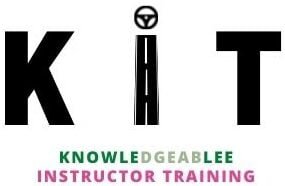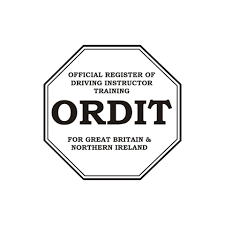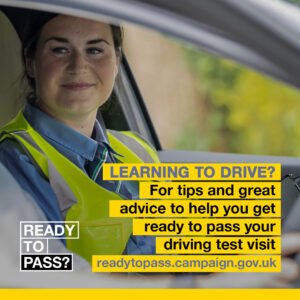AUTOMATIC DRIVING LESSONS
The Advantages of Automatic Driving Lessons
Switching to automatic driving lessons can indeed simplify the learning process and offer several advantages over manual transmission. Here are some key points to highlight:
1. Simplified Procedure: Automatic driving lessons eliminate the need to master clutch control and gear shifting, making the learning process less complex from the outset. This allows students to focus more on steering and gaining confidence behind the wheel.
2. Increased Confidence: With the absence of stalling or rolling back on hills, learners in automatic vehicles often experience a boost in confidence. The reduced likelihood of unexpected stalls can help learners feel more at ease and empowered during their lessons.
3. Improved Vehicle Control: Without the distraction of gear changes, students can concentrate more on controlling the vehicle and developing essential driving skills. This can lead to better judgment of speed, improved road awareness, and enhanced overall vehicle handling.
4. Cost-Effectiveness: Automatic driving lessons may require fewer sessions compared to manual lessons, potentially resulting in cost savings for learners. The simplified learning process can lead to faster progress and proficiency, reducing the overall expense of obtaining a driver’s license.
By offering automatic driving lessons, Drive 4 Pass Driving School aims to provide a convenient and effective learning experience for individuals of all ages and skill levels. If you’re considering automatic driving lessons or have any questions, don’t hesitate to reach out to Drive 4 Pass to schedule your first lesson and embark on your journey towards becoming a confident and skilled driver.
1-Hour Automatic Lesson
2-Hour Automatic Lesson
2-Hours Automatic Lesson
2-Hours Automatic Lesson
Driving Test 2 Hours
10-Hours Automatic Block Booking
20-Hours Automatic Block Booking
2-Hours Manual Lesson
2-Hours Motorway Lesson
- Why 2-hours lessons are better than 1-hour lessons
There are several reasons why 2-hour driving lessons can be more beneficial than 1-hour lessons:
- Increased Practice Time: With a 2-hour lesson, you have double the amount of time behind the wheel compared to a 1-hour lesson. This allows for more practice and reinforcement of skills, leading to better retention and improvement of driving abilities.
- Deeper Focus and Concentration: Longer lessons provide an opportunity to delve deeper into specific skills or manoeuvres. With more time available, both the instructor and the learner can focus on areas that need improvement without feeling rushed.
- Better Adaptation to Driving Conditions: Longer lessons allow learners to experience a variety of driving conditions, such as different traffic situations, weather conditions, and road types. This exposure helps learners become more confident and adaptable drivers.
- Reduced Transition Time: In shorter lessons, a significant portion of time may be spent getting to and from the practice area. With longer lessons, there is less time wasted on transitioning between locations, allowing for more uninterrupted practice.
- Cost-Effectiveness: While longer lessons may have a higher upfront cost, they can be more cost-effective in the long run. With fewer lessons needed overall, learners may save money compared to taking multiple shorter lessons.
- Building Endurance: Driving for extended periods helps learners build endurance and stamina behind the wheel, preparing them for longer drives in the future.
Overall, 2-hour driving lessons offer a more comprehensive and immersive learning experience, allowing learners to develop their skills more effectively and efficiently. However, it’s essential to consider individual preferences and comfort levels when deciding on the duration of driving lessons.
How does that equate to money then?
If you take the rough example above, to get 3 hours of roundabout practice with 1-hour lessons you need the following.
3 x 1 hour @ £35 = £105
Alternatively, you could do just a single 2-hours lesson.
1 x 2 hours @ £65 = £65
If you have any further questions or thoughts on this subject, please get in touch.
Is it worth getting an automatic-only driving licence?
Learning to pass an automatic only test is becoming increasingly popular.
Increasing numbers of young drivers are deciding that learning to change gear in a car is a waste of time. The past 12 months has seen an 11 per cent year-on-year jump in the number of drivers qualifying with an automatic-only licence.
In 2012, there were just 550,000 drivers holding automatic-only licences. In 2021, that figure had doubled to 1.1 million.
According to a recent survey by safety charity IAM RoadSmart, around six in 10 youngsters between 17 and 24 plan to apply for an automatic-only licence.
Others think the popularity of automatic-only licences could go further, faster.
Why an automatic-only licence makes sense
Warning: this won’t be music to the ears of driving enthusiasts. The number of cars on sale in the UK with manual gearboxes is tumbling. Latest figures (from 2021) show that nearly two thirds (62 per cent) of new cars sold in the UK were automatic. In 2000, just 15 per cent were autos. The message is clear: to have the widest choice, you need an automatic.
Part of this is to do with the popularity of electric vehicles (EVs). From 2030, no new combustion engine cars will be sold in the UK. And that means no new car will have the familiar clutch and lever combo for changing gear.
Learn to drive in an automatic and that’s all you can get behind the wheel.
What is the difference between automatic and manual driving tests?
They are basically identical. In qualifying for an automatic licence, you can fail on things that might trip you up during a manual test. The big difference is the qualification you get. When you take an automatic-only driving test, you are only qualified to drive automatics.
When an automatic-only licence might not make sense
Weirdly, even though there’s less to do driving an auto – no pesky clutch to control – pass rates for automatic tests are lower than manuals. The current pass rate for automatic licences is around 40 per cent compared with 46 per cent for tests in cars with manual gearboxes.
If you have an automatic-only licence, you also have to be aware that you won’t have the flexibility to drive a manual car should you ever need to. This might have an impact if you ever need to rent a car for a holiday.
Equally, if you think you might need to earn a living driving, perhaps for a courier company, not having a manual licence will limit your opportunities.
How long will the manual gearbox last?
That is a very good question. As we’ve seen, sales of the automatic have already overtaken and pulled away from the manual. Mercedes-Benz has said it will begin phasing out manuals from next year. Volkswagen will also stop including manual gearboxes in its range from next year onwards. And sportscar maker Ferrari hasn’t made a manual gearbox road car since 2011.
For the car manufacturers, doing away with the manual makes production and sales sense: it’s much easier if there is only one choice for buyers. And if that option is an automatic, it allies with the way car makers engineer models these days. Car electronic safety systems work more seamlessly with automatic transmissions.












